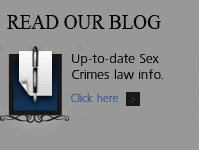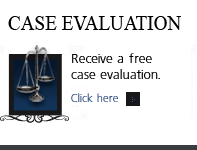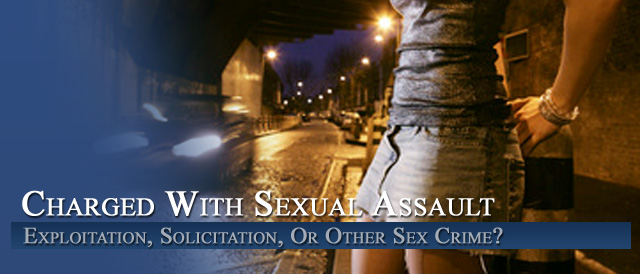
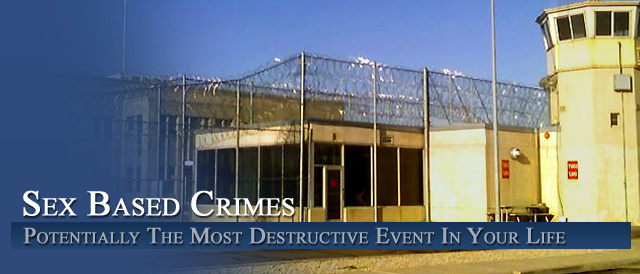
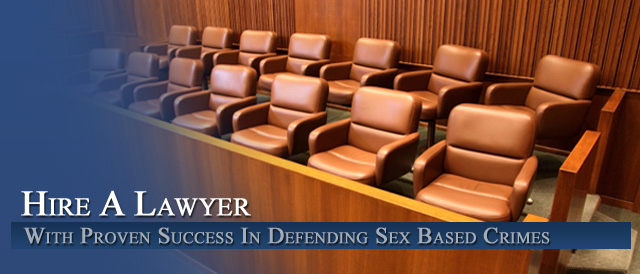


Colorado Child Pornography – Sexual Exploitation of Children Cases – From Charging To Trial
Introduction – The large increase in the prosecution of child pornography – sexual exploitation of children – cases in Colorado has led to a closer look – by Colorado criminal defense attorney’s – at the methods, strategies and tactics used by law enforcement to investigate and then prosecute these cases. This page explores some of the issues in these cases.
Investigating and prosecuting child pornography cases inevitably involves more than just the evidence that certain images were found on a computer used by the defendant.
Collectors of child pornography, and their computers and digital storage media may be found to contain hundreds or even thousands of images.
The “recycling” of the images commonly found on internet websites has led to the cataloging of the “identities” of the children depicted may be determined during the investigation.
The focus of law enforcement in these cases is to attack the collectors or downloaders of these images.
The targets of collectors of child pornography investigations often involve people who are knowledgeable about technology, computers, and the Internet. Images are traded on the internet within their own towns and around the world. Web sites, file sharing, e-mail, buddy lists, password-protected files, or encryption is commonly used
Understanding The Focus Of Law Enforcement In Colorado Sexual Exploitation Cases
The Colorado Defense Lawyer defending these charges must have MORE THAN a basic understanding of this subculture of the Internet and the persons who are targets of law enforcement.
To better understand the context within which these cases are investigated and prosecuted, a lawyer needs to have a much deeper view of the big picture.
Law enforcement investigators with experience or specialized training in pornography cases, as well as other investigative resources such as the National Center for Missing and Exploited Children, provide great assistance to a prosecutor.
Investigative and forensic evidence
Child pornography investigations often start with a report to law enforcement by an independent third party who discovers what he or she believes to be child pornography on a computer or storage media while using or servicing computer equipment. Other child pornography cases may be byproducts of an undercover online investigation directed at child predators.
The suspect may have sent child images to the undercover officer. Investigating officers at some point may have seized the suspect’s computer and media, and the subsequent forensic examination may have disclosed child images.
Whatever the background, a followup investigation that provides an understanding of the circumstances of the use of the computer and background details about the defendant are next engaged.
From the prosecution’s perspective, these cases are often not just about the found images. A comprehensive forensic examination and analysis is used to reveal usage habits by the defendant or others who had access to the computer will help establish possession of the images and knowledge of what they depict.
Because of this, the forensic examiner is often a critical witness at trial. The forensic examination may provide evidence in support of the prosecution of the case including, but not limited to:
Internet browser history and typed URLs.
Subscription-based Web sites.
E-mail correspondence.
File sharing or peer-to-peer software, usage history, and remnants.
Instant messages.
Buddy lists.
Time/date stamps associated with files.
Folder and directory structures (i.e., paths to images and data).
Screen names, e-mail addresses, online identities.
Evidence of remote or offsite file storage locations (physical or virtual).
Logon-logoff details.
Internet service provider (ISP) information.
Financial or other personal information related to interest in children.
Metadata associated with the charged images.
The followup investigation may provide evidence for use at trial, including but not limited to:
Whether images are from a series known to be of identifiable children (e.g., from databases maintained by the National Center for Missing and Exploited Children or U.S. Immigration and Customs Enforcement).
Live witness testimony concerning actual identification of children shown in images.
Whether defendant has a history of Internet postings (e.g., Web site, newsgroup, or bulletin board services) under various screen names or identities.
Identification via ISP account information of the e-mail account or address association.
Charging The Case
The upfront charging decisions made by a prosecutor in child image cases will likely have a significant impact on the subsequent trial. One approach to the charging decision might include basing counts on the images that give rise to the fewest legitimate legal or evidentiary challenges (e.g., video or still images, known victim series, basis for estimating age of unknown children, nature of conduct shown, showing of faces and other portions of body, background in image) and that also will have the greatest impact on the jury.
Thus, as the prosecutor in a child pornography case decides which of the many images should be used as the basis for the charges, the decision will involve both substantive and tactical considerations.
Substantive considerations
Do the images meet the statutory definitions of child pornography or of obscenity?
Which and how many of the recovered images will be used as the basis for the charges?
Is the evidence adequately linked to the defendant (e.g., were the images recovered from a computer in the defendant’s home or place of employment or were they found on external media (such as a CD-ROM or flash memory drive) and where was that media found?
How are the counts structured?
By image.
By event (e.g., download dates).
By storage media (e.g., diskette, hard drive, thumb drive, CD, DVD).
How many counts will be charged?
Does local law allow for the filing of individual counts or is there a multiplicity or duplication issue?
Does the evidence establish that the images depict real children?
Is the theory of the case based on possession alone or is there also evidence of distribution or promotion?
Is the case charged as an attempt or as a completed crime?
Is the case overcharged?
Can uncharged images and other related data be admitted as evidence of identification, intent, knowledge, ownership, control, or absence of mistake or negligence?
Is there evidence that the client is connected to a larger group of similarly interested persons with whom the defendant is in contact via computer?
Is there evidence that suggests that the client is more than a collector (e.g., evidence of unknown child victims of actual physical sexual assault or abuse by the defendant)?
Was other evidence recovered that demonstrates relevant proclivities of the defendant (e.g., sexually oriented magazines or video tapes, Internet search engine history, suggestive articles of clothing)?
What evidence exists concerning the client ‘s level of knowledge of computers and computer technology?
What evidence exists showing the client is responsible for placing the images on the computer or media?
Do the video images may more clearly establish the elements of the offense?
Do the selected images adequately portray the offense charged? (For example, do the images graphically depict a sex act or merely suggest a sex act?)
Are faces visible?
Are the number and nature of the images selected adequate to prove the crimes charged?
Jury selection
Because the charges and the evidence in a child pornography case can be subject to widely differing views, the jury selection process is crucial. Many prospective jurors may not be able to understand computer technology and forensic evidence. Exploring attitudes regarding speech, computers, the Internet, and Federal, State, or local government regulations should identify jurors who are able to rely on digital evidence. Finally, questioning should discern whether jurors are prepared for what they will be exposed to in a child pornography case.
Discovery by the defense
Because child pornography is contraband, proper control, handling, and access restrictions should be considered at all times. The use of judicial protective orders or stipulations during the defense’s discovery process can be a major hurdle to justice.
Other Articles of Interest:
- Information On Colorado Prosecution Trends In Sexual Exploitation Of Children Cases – 18-3-405.4 – 18-6-403 – Child Pornography Cases
- Understanding Colorado Sexual Exploitation Child Pornography Law – The Search Warrant
- Colorado State Child Pornography – Sexual Exploitation of Children – 18-6-403 – Better Than Federal Child Pornography Charges Section 18 – U.S.C. – 2252
- Understanding The Internet Crimes Against Children (ICAC) Task Force’s Impact on Colorado
- 18-3-405.4 C.R.S. Internet Sexual Exploitation of a Child

